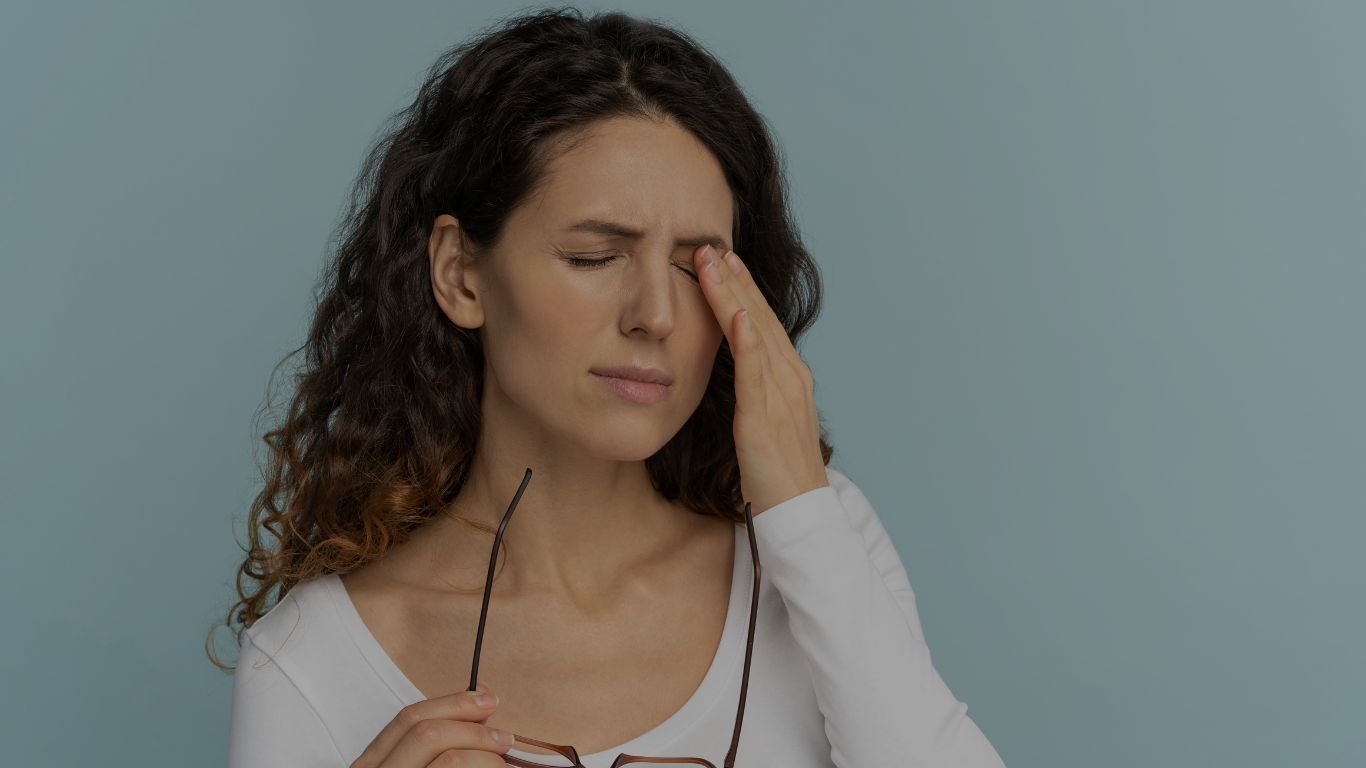Redness or “red eyes” are a common sign of dry eye syndrome. However, it’s important to understand that there are many other causes of red eyes, some of which can be emergencies.
In this article, we'll discuss how dry eyes cause redness, other common causes of red eyes, and what you can do to improve these symptoms.
How Does Dry Eye Cause Redness?
Dry eyes can cause redness when the eyes do not produce enough tears or the tears that are produced are not of the right consistency to keep the eyes lubricated. This can lead to irritation and inflammation of the eye's surface. This inflammation leads to the dilation of the small blood vessels in the conjunctiva resulting in a red appearance.
Additionally, dry eyes can also cause the eyelids to become inflamed, which can further contribute to conjunctival irritation and redness.
What Are Other Common Causes Of Red Eyes?
While dry eyes are a common causes of red eyes, there are many other causes. Some of these may be serious emergencies. It’s important to see a doctor for red eyes.
Here is a short list of other conditions that can cause red eyes:
1. Conjunctivitis (Pink Eye)
Conjunctivitis is an infection or inflammation of the conjunctiva, the clear membrane that covers the white part of the eye and the inside of the eyelids. It can cause redness, itching, and discharge.
2. Allergic Reaction
Allergic reactions can cause red, itchy, and watery eyes.
3. Eye Infection
Eye infections such as bacterial or viral conjunctivitis, or corneal ulcers, can cause redness, pain, and discharge.
4. Irritants
Exposure to irritants such as smoke, chemicals, wind, and dust can cause red, irritated eyes.
5. Eye Injuries
Eye injuries such as a scratched cornea or blunt trauma can cause redness, pain, and blurred vision.
6. Blepharitis
Blepharitis is an inflammation of the eyelids that can cause red, itchy, and swollen eyelids, as well as a burning or gritty sensation in the eyes.
7. Uveitis
Uveitis is an inflammation of the uvea, the middle layer of the eye, which can cause redness, pain, and sensitivity to light.
8. Broken Blood Vessels
Broken blood vessels in the eye can cause redness, especially in people with high blood pressure, diabetes, or other conditions that affect the blood vessels.
What Other Symptoms Accompany Redness From Dry Eyes?
It’s important to distinguish redness from dry eyes from these other conditions.
Patients with dry eyes often have other symptoms that accompany redness. The symptoms of dry eye redness can vary from person to person, but common symptoms include itching, burning, and discomfort in the eyes.
Other symptoms may include sensitivity to light, blurred vision, and a feeling of something being in the eye. These symptoms can be mild or severe and may come and go. Some people may experience dry eye redness only occasionally, while others may experience it more frequently or even chronically.
What causes dry eye redness?
Any condition or problem that causes dry eyes can result in redness.
There are several factors that can contribute to dry eye redness, including age, certain medical conditions, and certain medications.
For example, as people age, their eyes produce fewer tears, which can lead to dryness and redness.
Medical conditions such as Sjogren's syndrome, which is an autoimmune disorder that affects the tear and saliva glands, can also cause dry eye redness. Certain medications, such as antihistamines, decongestants, and blood pressure medications, can also contribute to dry eye redness by reducing tear production or altering the quality of the tears.
You can read our full article on the comprehensive list of causes of dry eyes for more information.
How is dry eye redness treated?
Treatment for dry eye redness typically involves addressing the underlying cause of the dryness.
This may include using artificial tears to lubricate the eyes or omega-3 fatty acid supplements to improve the quality of tears.
In some cases, prescription eye drops may be necessary to improve the quality of the tears.
In more severe cases, a procedure called punctal occlusion may be recommended to keep the tears from draining away too quickly. This procedure involves closing the tear ducts, which can help to retain tears on the surface of the eye.
How can dry eye redness be prevented?
Preventing dry eye redness starts with understanding the causes of dry eyes and taking steps to reduce risk factors. This may include avoiding dry, windy environments, using a humidifier, and taking frequent breaks when using electronic devices.
Staying ahead of dryness with a high-quality artificial tear drop also is important. Additionally, it is good to practice eye hygiene and avoid rubbing the eyes, which can exacerbate dryness and redness.
Wearing protective eyewear, such as sunglasses, can also help to prevent dry eye redness, as well as reduce the risk of other eye problems.
Summary
In conclusion, dry eyes are a common cause of eye redness which results from inflammation of the eyes’s surface.
To prevent dry eye redness, it is important to understand the causes of dry eyes and take steps to reduce risk factors.
It is also important to use artificial tears to prevent or improve symptoms.
If you are experiencing symptoms of dry eye redness, it is important to speak with an eye doctor




